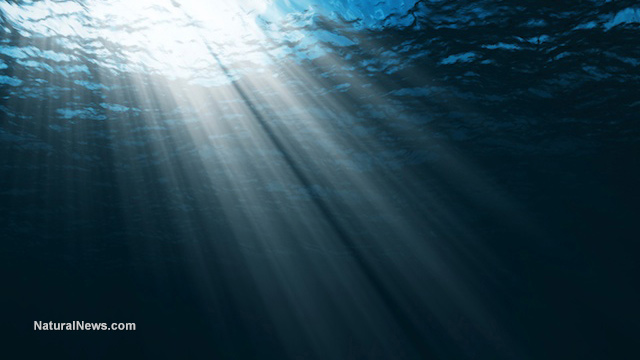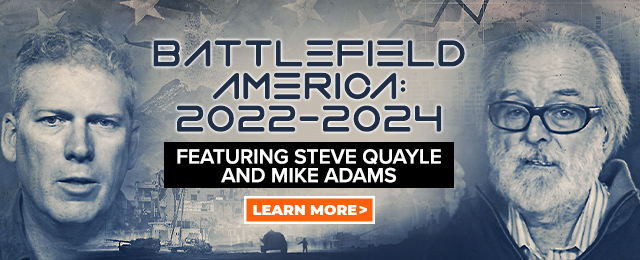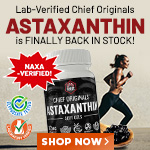Europe's ocean depths and seafloor found littered with trash
Sunday, May 11, 2014 by: PF Louis
Tags: ocean pollution, plastics, seafloor

- TAKE IT DOWN Act advances in Congress amid free speech concerns
- Gardening tips: 15 Simple tricks to double your garden’s yield this season
- Survival 101: Dangerous places to avoid when disaster strikes
- Nature’s arsenal: How plant compounds power military survival and healthcare in crisis
- Kawasaki unveils rideable ROBOT HORSE powered by hydrogen
- DOJ and ATF kill Biden’s “Zero Tolerance” firearms dealer policy
- Amazon's Kuiper satellite launch delay highlights uphill battle against Musk's Starlink
- Hospital staffers sound alarm after 10 nurses were diagnosed with BRAIN TUMORS
- Barley: A nutrient-dense ancient grain with modern benefits
- Criminal referral requests filed against Fauci and top COVID officials in seven states
- “Prepare Tribe: Prepare, Protect, Provide” on BrightU: How to build a disaster-proof shelter in the middle of nowhere
- New studies ignite debate: Fluoride linked to autism and ADHD, prompting calls for policy reassessment
- Germany prepares students for war amid growing security concerns
- Rafael Medoff explores the role of Jabotinsky in the rise of Revisionist Zionism in “Militant Zionism in America”
- Sovereign debt paradox: U.S.-China mutual holdings fuel geopolitical tensions
- Yoga and autism: A science-backed look at how a simple practice is transforming behavior and movement in children with ASD
- Widespread social and economic unrest: Steve Quayle issues urgent financial warning of imminent asset collapse in new interview with Mike Adams
- POLL: U.S. support for Israel drops to lowest level in decades amid Gaza War
- Tulsi Gabbard leads charge against the Biden regime’s global censorship of the 'Disinformation Dozen'
- Fauci is back in the limelight, and he’s busy promoting a future COVID or FLU pandemic
- Aerosolized bioweapons? Strange “diploid biomasses” falling out of the sky in Florida captured under the microscope
- Analysis: The coming economic collapse, a mass uprising and Trump's three secret weapons to halt the growing revolt
- Widespread social and economic unrest: Steve Quayle issues urgent financial warning of imminent asset collapse in new interview with Mike Adams
- Kiss Your Genetic Privacy Good-Bye! 23andMe Gets Green Light to Sell Your Intimate Genetic Details to Anyone They Want
- Tulsi Gabbard takes aim at censorship: Justice for the ‘Disinformation Dozen’
- Mike Adams releases country western hit single: Goin’ Back in Time is Comin’ Home
- U.S. lawmakers investigate Meta over alleged China collaboration
- CLOT SHOT PLANDEMIC UNFOLDING: Fibrous, rubbery clots caused by covid injections have prion-like seeding activity
- Chemtrails unveiled: How the CIA and Big Business are manipulating the weather for profit
- How Israeli military-connected corporations are secretly controlling your online privacy
- European Court of Justice: Healthcare professionals who promoted or administered COVID-19 vaccines are CRIMINALLY LIABLE for any harm caused
- DEATH by VACCINE or face PRISON time: Canadian Freedom Convoy leaders CONVICTED for protesting forced vaccination during the Covid Plandemic
- Defunding DEADLY mRNA jabs: Government funding for mRNA technology being scrutinized and sidelined until proven "safe and effective" for real
- Federal employees whine over DOGE's new directive requiring them to do a 5-point summary of weekly accomplishments
- U.S. approves new Russian ambassador as diplomatic thaw continues
- Curcumin’s ancient healing power supercharges muscle recovery, and its effects are compounded with anti-inflammatory foods and supplements
- Newly released JFK files reveal Pentagon's role in creating Lyme disease and covid in the same lab
- Analysis: The coming economic collapse, a mass uprising and Trump's three secret weapons to halt the growing revolt
- Mike Adams releases country western hit single: Goin’ Back in Time is Comin’ Home
- Aerosolized bioweapons? Strange “diploid biomasses” falling out of the sky in Florida captured under the microscope
- Kiss Your Genetic Privacy Good-Bye! 23andMe Gets Green Light to Sell Your Intimate Genetic Details to Anyone They Want
- Dr. Mike Yeadon releases 15-minute testimony - WATCH - about genocidal intent of COVID “vaccines”
- Trump reverses course on Gaza plan, says “nobody is expelling Palestinians”
- MEDICAL BOMBSHELL: FDA admits Covid mRNA 'Vaccines' CAUSE CANCER
- European Court of Justice: Healthcare professionals who promoted or administered COVID-19 vaccines are CRIMINALLY LIABLE for any harm caused
- The Health Ranger releases “Vaccine Zombie” song and music video, using AI-animated zombies for the music video
- 5 Simple steps to boost your brainpower: How to strengthen executive function in a distracted world
- A lack of integrity in Academia: Harvard professor found GUILTY of fraudulent research to promote CRT theory
- Federal employees whine over DOGE's new directive requiring them to do a 5-point summary of weekly accomplishments
- EPA advisor admits the agency is funneling billions to climate groups ahead of Trump’s return to White House
- California's social media censorship law struck down: A victory for free speech or a threat to online safety?
- Space war brewing? Russia threatens to destroy Starlink satellites
- Survival 101: Effective EMF blocking techniques
- Rep. Nancy Mace introduces bill to ban biological males from female facilities on federal property
- Red Cross issues warning to stop blood plasma donations from vaccinated people
- Scientists confirm: GENIUS brain function can be spontaneously unleashed in humans without any apparent cause
- EPA advisor admits the agency is funneling billions to climate groups ahead of Trump’s return to White House
- HYSSOP: What research reveals about the health benefits of this ancient holy herb
- Two containers with completed ballots fall out of truck in Florida
- Newly released JFK files reveal Pentagon's role in creating Lyme disease and covid in the same lab
- Global leaders unite to clamp down on “misinformation” with UN-backed Cascais Declaration
- BREAKING: 2025 NDAA authorizes mandatory military draft of WOMEN across America… as Pentagon pursues global NUCLEAR war with both Russia and China at the same time
- Michael Yon warns of a ZIONIST TAKEOVER in Trump’s second administration
- Ozempic and Wegovy weight loss drugs are injectable LIZARD VENOM PEPTIDES that may unleash a devastating wave of organ failure… side effects align with symptoms of SNAKE BITES
- The Health Ranger releases “Vaccine Zombie” song and music video, using AI-animated zombies for the music video
- Mike Adams releases country western hit single: Goin’ Back in Time is Comin’ Home
- BOMBSHELL: DNA testing kits are a SCAM to develop ethnic-specific bioweapons
- Israeli soldiers accused of even more torture and abuse in the West Bank
- These 13 countries just signed an agreement to engineer a global FAMINE by destroying food supply
- NASA admits that climate change occurs because of changes in Earth’s solar orbit, and NOT because of SUVs and fossil fuels
- Fully vaccinated about to see “tsunami” of illness and death, warns virologist
- RFK Jr. clears key hurdle: Sen. Susan Collins backs controversial HHS nominee, signaling a new era for health policy
And it's where the ocean surface trash is collected, making it look as though it were never where eyes once saw. Thus the illusion of ocean purity is maintained.
Modern marine exploration advances and computer technology enable this veil of illusion to be not only pierced but mapped according to ocean floor litter density. Deep water submarine cameras and other deep water submersibles transmit images to vessels on the surface.
Electronic sensing devices from those or similar vessels can map out the topography's 3D layout to determine what litter is going where and its sources. What's underwater mimics the topography of the planet above water: continental slopes and shelves; seamounts, banks, and mounds; submarine canyons; ridges; and basins.
All of the equipment and man-hours for this research requires a lot of funding. But a group of 16 EU marine and oceanography scientists from Portugal, Spain, the United Kingdom, the Netherlands, Norway, Belgium and Germany pooled funding resources among several European private parties, NGOs and government agencies to get the job done.
Their study was called "Marine Litter Distribution and Density in European Seas, from the Shelves to Deep Basins."
Information from this vast study
The research, authored by lead researcher Christopher K. Pham of Portugal's University of the Azores introduces the fact that "an estimated 6.4 million tonnes of litter entering the oceans each year, the adverse impacts of litter on the marine environment are not negligible."Then he proceeds with "plastics are by far the most abundant material recorded. ... Plastics are a source of toxic chemicals such as polychlorinated biphenyls (PCBs) and dioxins that can be lethal to marine fauna.
"Furthermore, the degradation of plastics generates microplastics which, when ingested by organisms, can deliver contaminants across trophic [relating to feeding and nutrition] levels."
The research employed "remotely operated vehicles (ROV), manned submersibles or towed cameras" as well as old-fashioned trawling methods to explore the nearby Mediterranean, the Atlantic and the Arctic oceans.
They produced 588 on-site explorations. But they needed the assistance and cooperation of the EU-FP7 project HERMIONE, the UK's Mapping the Deep project and others to come up with the extensive mapping of sea floor litter possible.
The 32 sites ranged in depth from 35 meters to 4,500 meters, or almost 15,000 feet. The deepest basin was in the middle of the Atlantic. The over 500 types of litter found varied according to the site location and whether it was trawled (dragging large nets) or viewed remotely.
Usually, sea floor canyons contained the highest density of litter. But no matter how or where, plastic was the most prevalent.
You may wonder, as I did, how all that plastic sinks to an ocean floor. The stuff that floats drifts long enough to degrade and then sink. The drifting aspect was a challenge for this mapping project.
But lesser-known pre-production plastic pellets, or "nurdles," manage to get their way through existing wastewater filters and find their way through inland waterways and into the oceans. Synthetic textile fibers also break down into microplastics as well.
An earlier study determined that these microplastics adversely affect a very basic form of sea life known as sea worms or lug worms and nicknamed the "earthworms of the sea." This bottom of the food chain affects other sea organisms up that food chain.
The ocean as a dumping ground for rubbish, especially with plastic, was an invisible issue until recently. But it contributes to the haunting aspect of extinction along with the more obvious visible signs.
Sources for this article include:
http://www.theguardian.com
http://www1.plymouth.ac.uk
http://www.eu-hermione.net
http://www.theguardian.com
http://www.plosone.org
http://science.naturalnews.com
Ocean pollution at FETCH.news
Get independent news alerts on natural cures, food lab tests, cannabis medicine, science, robotics, drones, privacy and more.
More news on ocean pollution
Take Action: Support Natural News by linking to this article from your website
Permalink to this article:
Embed article link: (copy HTML code below):
Reprinting this article:
Non-commercial use OK, cite NaturalNews.com with clickable link.
Follow Natural News on Facebook, Twitter, Google Plus, and Pinterest
Science News & Studies
Medicine News and Information
Food News & Studies
Health News & Studies
Herbs News & Information
Pollution News & Studies
Cancer News & Studies
Climate News & Studies
Survival News & Information
Gear News & Information
News covering technology, stocks, hackers, and more



"Big Tech and mainstream media are constantly trying to silence the independent voices that dare to bring you the truth about toxic food ingredients, dangerous medications and the failed, fraudulent science of the profit-driven medical establishment.
Email is one of the best ways to make sure you stay informed, without the censorship of the tech giants (Google, Apple, Facebook, Twitter, YouTube, etc.). Stay informed and you'll even likely learn information that may help save your own life."
–The Health Ranger, Mike Adams













































